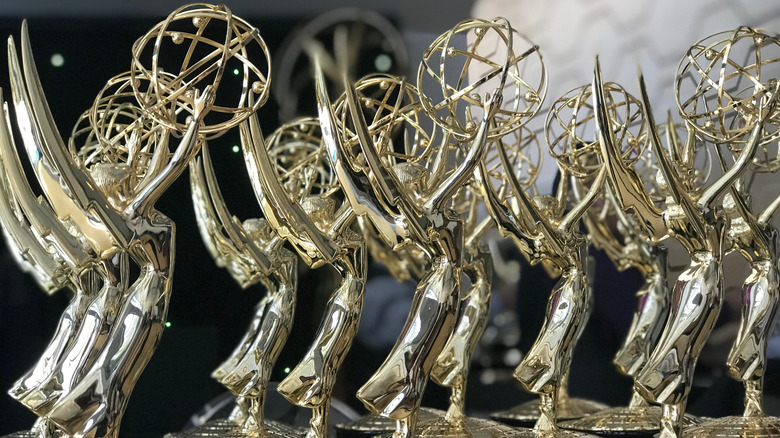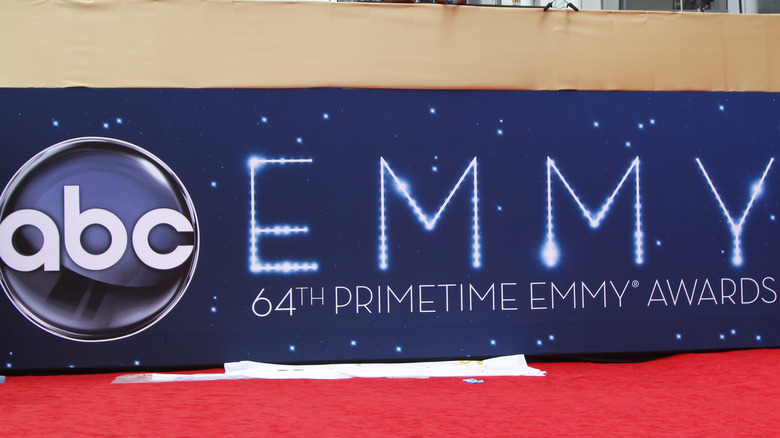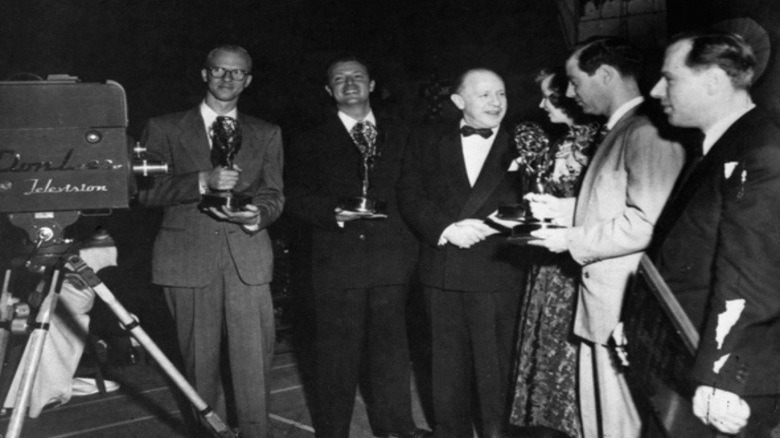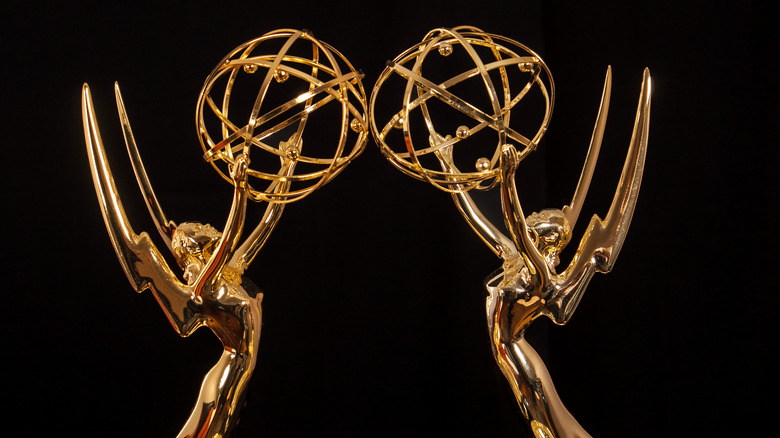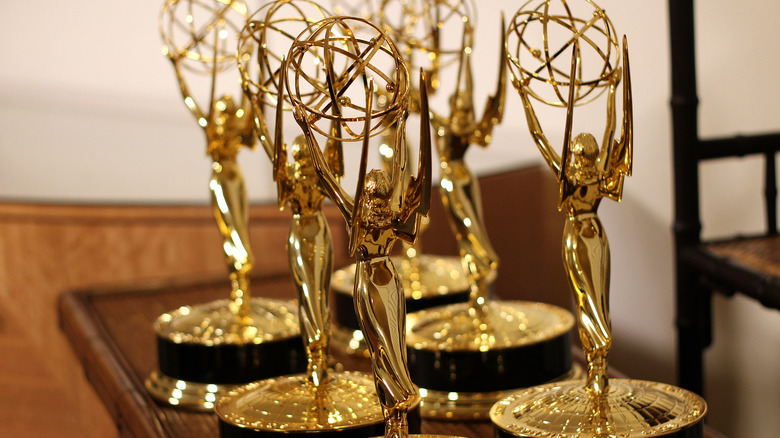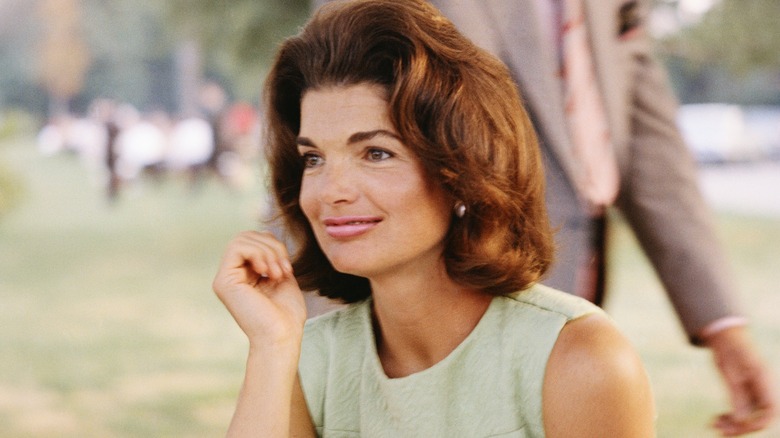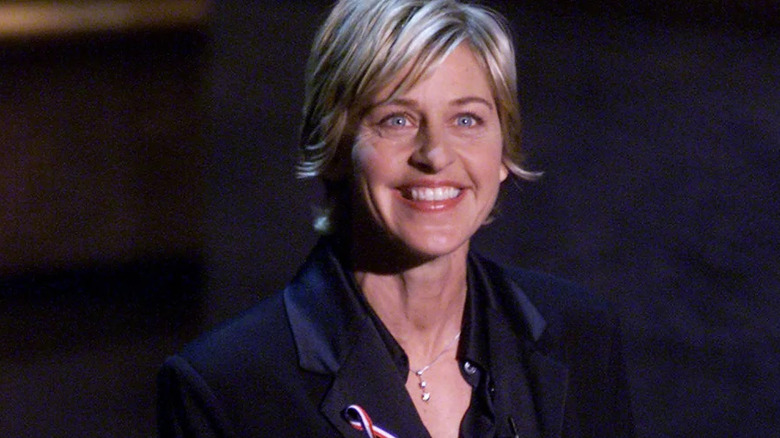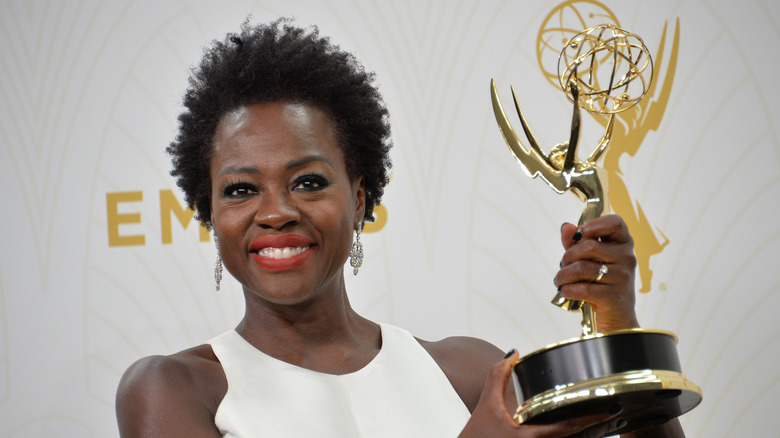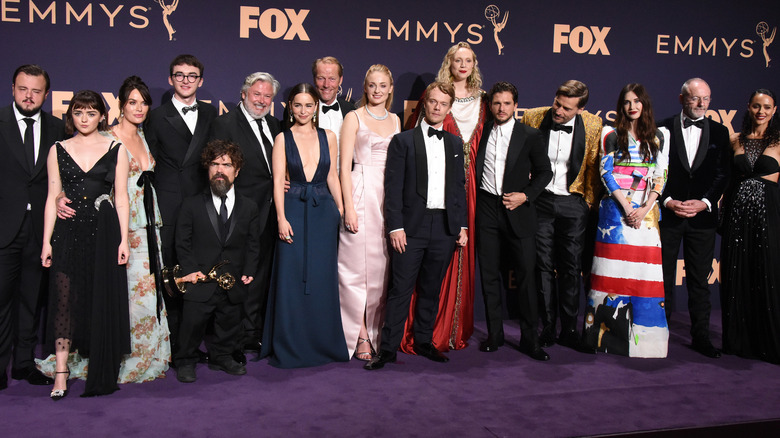A History Of The Emmys
In 1949, the Academy of Television Arts & Sciences introduced the Emmy Awards to recognize superior artistic and technical merit in the television industry. From that year on, this prestigious award ceremony has been broadcast live for viewers at home to enjoy. In its initial few years, the ceremony was limited to Los Angeles-based residents, recognizing only locally aired shows. As the Emmys grew, the broadcast and recognized programs expanded nationally, with network conglomerates ABC, NBC, CBS, and FOX in rotation today for broadcasting rights.
There are three separate organizations of the Emmys: The National Academy of Television Arts & Sciences (NATAS, based in New York), the Academy of Television Arts & Sciences (ATAS, based in Los Angeles), and the International Academy of Television Arts & Sciences (IATAS, based in New York). Each of these organizations is responsible for different sectors of awards. NATAS administers the Daytime Emmys, as well as News & Documentary Emmys. ATAS is in charge of the Primetime Emmys, as well as the Technology & Engineering Emmys. IATAS recognizes programs that are initially broadcast internationally.
With over 70 years of annual telecasts, there's a lengthy red carpet of history and little-known facts to unroll. Below, the primary focus will be on the ATAS and the Primetime Emmys.
How the Emmy got its name
Academy founder Syd Cassyd initially proposed that the Emmy Award should be named "Ike," short for the iconoscope tube, a piece of early electronic camera technology that assisted in scanning an image for the transmission of television. Upon its invention, TIME humorously noted that "the new tube does not solve television's basic problem: how to scare up enough programs [that] people will want to look at."
This name didn't stick around for long, as members of the Academy pointed out that Ike was already a well-known nickname for General Dwight D. "Ike" Eisenhower, the national war hero and future president (via The Hollywood Reporter). The Academy's third president and pioneer television engineer Harry Lubcke then suggested the name "Immy," which was the common term for the image orthicon tube, the more technologically advanced successor to the iconoscope tube. The suggestion stuck, as members unanimously agreed this would be a more fitting name. However, the name would go through one last modification: It was later suggested that it should be adjusted for a more feminine touch, thus the prestigious "Emmy" was born.
The first Emmy Awards telecast
The inaugural Emmy Awards ceremony was held on January 25, 1949 at the Hollywood Athletic Club. Musician and radio host Rudy Vallée held the title of the event's first host, but not for long. When Vallee had to leave town at the last minute, radio host Walter O'Keefe was chosen as a substitute.
The first telecast was broadcast locally on the Los Angeles TV call sign KTSL, per the Emmys website. As today's viewers sit through an average three hours of runtime, the first telecast was swift, with just six awards given out. The eligibility to win an award was limited to shows produced in Los Angeles County, California, airing only in the local surrounding media market. During this time, television sets were not yet a household staple item — there were less than a million TVs in the United States.
The first Emmy was awarded to ventriloquist Shirley Dinsdale and her puppet sidekick Judy Splinters for most outstanding television personality for her work in "The Judy Splinters Show." Dinsdale recalled how she had contemplated even attending. "It was so brand new," she reminisced (per the Los Angeles Times). "No one knew what it was. All I know is that everybody was being cute about it. They said, 'you have to go to the banquet at the Hollywood Athletic Club.'" Regarding her early career in television, Dinsdale added, "I wouldn't have given up being in the very beginning of television for anything."
The origin of the iconic statuette
Even the most casual television viewer can recognize the Emmy statuette. Worth its weight in both gold and prestige, the Emmy award portrays a woman with lightning bolt wings behind her in creative uplift and supporting global transmission, while gracefully raising an atom to symbolize the marriage of arts and science.
It took 47 proposals and the entire Academy to finalize the design. The end product was crafted in 1948, when television engineer Louis McManus proposed his idea, with his wife Dorothy modeling as the muse behind the statuette. This design was so well-loved that it actually won its own Emmy – the first ceremony honored McManus with the award in a special category titled "original design of the Emmy." As McManus made his way to the head table to accept his award, he was told, "Louis, here she is ... our baby. She'll be here long after we're gone." And so, she is.
How an Emmy is made
Chicago-based trophy maker R.S. Owens is responsible for the production of multiple well-known statues, including the Oscar and the Emmy. A meticulous process is used to manufacture the Emmy. Masters in their skilled artistry, the craftsmen of R.S. Owens dedicate more than five hours to produce each statuette. Metalworkers first melt virgin metal in a 700-degree Fahrenheit furnace before pouring it into a mold for half a minute. Once the metal is solid, it is removed from the mold. The handcrafted atom is then welded into the Emmy's uplifted hands, per Fast Company.
Next, the coating process protects the metal against potential corrosion. The statuette is coated with a series of alloys through electroplating–zinc, copper, nickel, and pure silver. Finally, the statuette is dipped in 24-karat gold. Weighing in at just under seven pounds, the Emmy is then ready to be individually assembled and placed in a box for transportation. As nobody knows who the winners will be until the envelope is read, R.S. Owens creates individual placards for every single nominee, and then the winning recipient has their placard added to the award.
An imposter once fooled security
A peculiar thing happened during the 37th Emmy Awards. In September 1985, presenter Peter Graves announced the nominees for best supporting actress in a drama series. As he declared the winner Betty Thomas for her role in "Hill Street Blues," the camera panned to Thomas as she excitedly made her way to the stage. However, someone else moved a little quicker.
Per the Los Angeles Times, notorious prankster Barry Breman made his way onstage and accepted the award on Thomas' behalf, declaring that "Betty was not able to be here, and she asked me to accept this award." After they were awkwardly shuffled offstage, there was a swift cut to a commercial break. Whatever happened offstage seemed to resolve the confusion, as the cameras cut back to Thomas on stage accepting her award, playfully declaring, "well, it's definitely hard to follow an act like that...!" This interruption was broadcast live to over a million viewers.
Breman was later sentenced to six months of informal probation and fined $170. Emmy officials reported that he claimed to have bought a $300 ticket to the event, before duping guards into believing he worked for an NBC affiliate in order to gain backstage access. Other large events on Breman's imposter roster include breaking into the Super Bowl and posing as a major league baseball player.
First lady Jackie Kennedy won an Emmy
The White House was once home to an Emmy award winner, first lady Jackie Kennedy. In 1961, Mrs. Kennedy worked ardently to renovate the White House, restoring state and private rooms with original historic period pieces and artwork and spearheaded the protection and preservation of historic White House artifacts. (Previous White House tenants had often packed up and sold many historic items as they moved out and made room for a new administration, thus erasing prominent parts of the building's history.)
Upon completion of the White House's $2 million renovation in 1962, Kennedy invited CBS news correspondent Charles Collingwood inside for a tour of the historic renovated space. Helmed by director Franklin Schaffner, "A Tour of the White House with Mrs. John F. Kennedy" premiered on both CBS and NBC in February of that year. A few days later, it was televised again on ABC, with an impressive viewership of over 80 million. Per The New York Times, FCC Chairman Newton N. Minow reflected, "After I got the overnight ratings, I called the president, who asked, 'what were they?' I said, 'Mr. President, they were higher than your press conferences.'"
Kennedy's Emmy for her work on this documentary is now preserved and showcased at the John F. Kennedy Presidential Library and Museum in Boston, Massachusetts.
The first Emmys in a post-9/11 world
The national tragedy of September 11, 2001 disrupted many lives forever. In the days following the tragic events, many TV networks and programs swiftly modified their schedules to air near-constant news coverage. Originally scheduled for September 16, the Emmy Awards ceremony was rightfully postponed as America grappled with confusion, heartbreak, and collective trauma. The new broadcast date was initially pushed to October. However, after the declaration of war from the Bush administration, Emmy executives postponed the telecast once again.
The telecast finally aired in November, making it the first Emmys event to ever be postponed not once, but twice, per Deadline. Host and comedian Ellen DeGeneres offered a well-needed sense of humor, even though tensions were still high. Met with a standing ovation, DeGeneres was warm and natural in welcoming the audience and viewers, giving people the sense that it was okay to laugh again, even if just for that evening.
I'd like to thank...
For many industry professionals, winning an Emmy is a career highlight — and a chance to nationally recognize friends and family. While it can be an exciting moment to watch, it can feel redundant when speeches are more or less the same.
"I think nothing bores people more than seeing a winner come up there and unfold a piece of paper and start thanking, you know, the agents, the manager, the dog, and so forth," shared Emmys producer, via The Washington Post. (Future winners, take note of Merritt Wever, who holds the record for shortest Emmy acceptance speech ever.)
Periodically, a winner crafts their acceptance speech to give a voice to progression for the greater good. In 2015, actress Viola Davis made history as she became the first woman of color to receive the award for best actress in a drama for her role in "How to Get Away with Murder," per Vanity Fair.
'In my mind, I see a line. And over that line, I see green fields and lovely flowers and beautiful white women with their arms stretched out to me over that line. But I can't seem to get there no how. I can't seem to get over that line,'" was how Davis opened her speech, quoting Harriett Tubman. She continued on, acknowledging the lack of diversity in the industry: "The only thing that separates women of color from anyone else is opportunity. You cannot win an Emmy for roles that are simply not there."
Revocation of an Emmy
Though uncommon, the Academy has been known to formally revoke or rescind an award. The reasons range from the recipient not meeting the basic qualifications to their public behavior not aligning with the standards the Academy strives to uphold for its honorees.
One of the more publicly reported rescindments occurred in 2021 regarding former governor Andrew Cuomo, who was previously recognized for his daily briefings during the COVID-19 pandemic, per The Hollywood Reporter. "The International Academy announced today that in light of the New York attorney general's report, and Andrew Cuomo's subsequent resignation as governor, it is rescinding his special 2020 International Emmy Award. His name and any reference to his receiving the award will be eliminated from International Academy materials going forward," the International Academy of Television Arts & Sciences reported in a statement.
Other revocations occur due to less serious matters, such as overstaying your welcome as a guest star in a show. In 2016, Peter MacNicol was nominated for a guest-starring role in the HBO series "Veep." At the time of submission and approval, he was considered a guest star. However, MacNicol would go on to star in one more episode, qualifying him as a cast member with an appearance of over 50% of the season, as The Hollywood Reporter noted. Because of this, he was no longer considered to have a "guest" role, per Deadline.
Shows with the most wins and nominations
There's no shortage of accolades when a show continues to perform well. For the first few decades, the Emmys would recognize only nationally broadcast shows. The playing field later expanded with the rise of cable TV in the 1980s. In 2013, the qualifications would once again expand as the Academy began to accept nominations from the streaming platform Netflix, and shortly after, HBOMax, Hulu, Disney+, and Amazon Prime. Today, although many network and cable shows still perform well, most nominations and wins are derived from streaming services (via The Wrap), as viewers show a strong preference for binge-watching without lengthy commercial breaks, per The Hollywood Reporter. Even so, TV networks and cable still have a leg-up with their long history in the playing field.
The long-standing variety sketch show "Saturday Night Live" holds the title of the show with the most Emmy wins, with a total of 81 Emmys and 305 nominations. HBO's fantasy series "Game of Thrones" is another notable mention: With a total of 160 awards and nominations, the series scorched the competition with fire, ice, and millions of avid viewers. Fellow HBO show "The Sopranos" ran the streets from 1999-2007 with a total of 112 awards and nominations.
